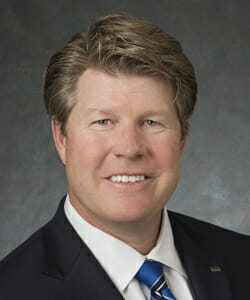When it comes to the 2023 economic outlook, prepare for landing … please make sure your personal assets are properly secured and company balance sheets are in the upright and pristine position.
Will the economy experience a soft landing, as the Federal Reserve is suggesting, or will stubborn inflation and rising interest rates cause the economic landing to be a bit bumpy?
In 2023, the Federal Reserve will continue to battle inflation and hike rates reaching its terminal rate in the first half of the year, while inflation slowly dissipates. This will cause economic activity to slow, perhaps to a recession-like pace, causing financial markets to be choppy, yet producing positive returns.
We think the economic landing will be bumpy, experiencing a short-lived, mild recession…prepare for landing.
READ ALSO: Here are the people to know in commercial real estate for 2023
READ ALSO: The 2023 Phoenix commercial real estate outlook and opportunities
Economy
The events over the past few years have led to an economic environment plagued with uncertainty. We expect the economy to slow significantly with a high probability of experiencing a recession. Real GDP may be negative in the second or third quarter, however we expect GDP to be approximately 0.6% for the year. In 2023 there are numerous reasons why we expect the economy to slow and enter a recession:

1. Inflation. Persistently high inflation continues to be a threat to economic growth. Even though there are signs that peak inflation was in the spring and inflation is abating, inflation begins the new year at a stubbornly high level. A consolation is that lower inflation and weakening economic growth will convince central banks to slow the hiking cycle, pause, and pivot, moving to cutting rates.
A material risk to our forecast is if inflation moves lower slower than the Fed or the market expects, or if inflation comes down and gets “stuck” at a level higher than the Fed target. This would cause the Fed to react and more than likely shove the economy into a recession.
2. Aggressive Monetary Policy. The Fed’s interest rate hiking cycle that began in March has been extremely aggressive. Understandably, since the Fed’s goal is combating spiking inflation. Consumption has been resilient, keeping the hopes of a soft landing alive. High interest rates will eventually weigh on consumer’s consumption behaviors and investment, particularly, residential investment slowing economic growth.
Historically, the only way the Fed orchestrated a soft landing was to lower interest rates. That would suggest the Fed will be hiking rates early in the year and cutting rates in the second half of the year. Unfortunately, the odds of a soft landing are stacked against the Fed.
We believe that the Fed’s aggressive tightening campaign will be the catalyst for a recession. Fed action has a pronounced lag — the full impact on inflation and the economy will not be felt until Spring/Summer of 2023. US consumers have an enormous amount of excess savings, and balance sheets are clean, leading us to forecast the recession will be short-lived and mild.
3. COVID. COVID no longer appears to impact consumer consumption in the US. However, China continues its zero-COVID policy. As China shuts down regions, cities and ports, the global economy suffers due to shortages and inflation. If lock downs continue, economic activity slows. However, it appears the Chinese will relax their COVID policies in 2023, this could be a positive catalyst for economic growth around the world.
Financial Markets
Fixed Income
We think the Federal Reserve will continue hiking short-term interest rates in 2023. We expect a step-down in rate hikes, back down to 0.25% per hike, and Fed Funds to peak at 5.0%. We then expect the Fed to pause and hold rates constant for the remainder of the year. Along the way, the Fed’s narrative may cause turbulence in the financial markets.
The long end of the yield curve believes the Fed will be successful fighting inflation. The 10-year Treasury yield of 3.6% at the end of November suggests the financial markets believe that inflation will be transitory. The bond market experienced a difficult year in 2022, we expect the 10-year Treasury yield to end 2023 around 4.0% and once again see positive returns in the bond market.
Equities
The financial markets have been discounting a meaningful slowdown in 2023. In September of 2022, the S&P 500, being a leading indicator, was down 25% pricing in an economic slowdown or recession. Given the Fed is hinting at a softer rate-hiking approach, we believe that 2023 will see positive returns in risk assets.
We expect the S&P 500 to end 2023 between 4,200 and 4,400, or a 5-10% total return. We expect a bumpy flight, with market volatility.
Conclusion
Prepare for landing. The global economic cycle is transitioning from an environment of accommodative monetary and fiscal policy, supporting moderate growth, to restrictive monetary and fiscal policy, supporting a contraction in growth. We expect 2023 real GDP to be less than 0.6% and experience a short-live, mild recession.
Risk-based assets are expected to produce positive returns and be one of the best-performing asset classes. Our S&P 500 target at end the year is between 4,200 and 4,400 or 5-10% total returns. We expect to see volatility in the equity markets, with corrections greater than 10%.
Interest rates will be on the rise and inflation is expected to subside. We think the entire yield curve will shift higher, Fed Funds will end 2023 around 5.0% and the 10-year Treasury yield will move modestly higher to close the year at 4.0%.
Prepare for landing…buckle up.
KC Mathews is chief investment officer with UMB Bank.




